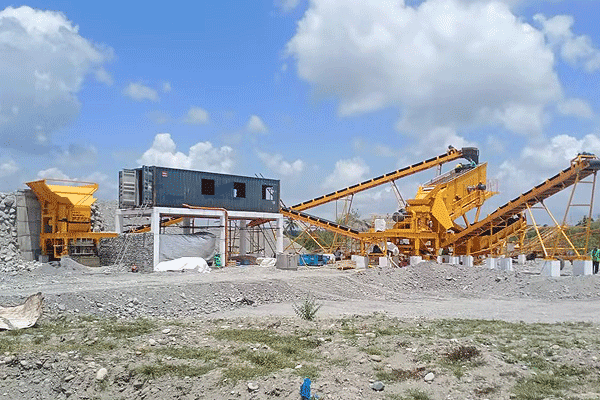600t/h Metamorphic Sandstone Crushing Plant for Hydropower Station
Introduction
Metamorphic sandstone is a durable and high-strength material, making it ideal for construction projects like hydropower stations. A crushing plant with a capacity of 600 tons per hour (t/h) ensures efficient processing of this material, meeting the demands of large-scale infrastructure. This article explores the key aspects of such a plant, including design considerations, equipment selection, and operational efficiency.
Material Characteristics
Metamorphic sandstone is formed under high pressure and temperature, resulting in exceptional hardness and abrasion resistance. Its compressive strength typically ranges between 100-250 MPa, requiring robust crushing machinery. The material’s low porosity also reduces water absorption, making it suitable for hydropower applications where durability is critical. Proper analysis of grain size and mineral composition ensures optimal crushing performance. 
Crushing Plant Design
A 600t/h plant must balance high throughput with energy efficiency. A three-stage crushing system—primary jaw crusher, secondary cone crusher, and tertiary impact crusher—is commonly used. Each stage reduces particle size progressively while minimizing wear on components. The layout should facilitate smooth material flow, with vibrating feeders and conveyors ensuring consistent feed rates. Dust suppression systems are essential to maintain environmental compliance.
Equipment Selection
Primary crushing typically employs heavy-duty jaw crushers capable of handling large feed sizes (up to 1,200 mm). Secondary crushing relies on cone crushers for finer output (20-50 mm), while tertiary impact crushers produce cubical aggregates ideal for concrete production. Screens classify materials efficiently, and automation systems monitor performance in real time. High-quality bearings and wear-resistant liners from famous brands enhance longevity under heavy loads. 
Operational Efficiency
To achieve 600t/h output, regular maintenance is crucial. Monitoring wear parts like mantles, concaves, and blow bars prevents unexpected downtime. Energy consumption can be optimized by adjusting crusher settings based on feed material variability. Skilled operators ensure smooth transitions between crushing stages, maximizing productivity while reducing operational costs.
Environmental Considerations
Hydropower projects often operate in ecologically sensitive areas, necessitating strict environmental controls. Dust collectors and water spray systems mitigate airborne particles. Noise barriers reduce sound pollution from heavy machinery. Additionally, using electric-powered equipment over diesel alternatives lowers carbon emissions, aligning with sustainable construction practices.
Conclusion
A well-designed 600t/h metamorphic sandstone crushing plant is vital for hydropower station construction. By selecting durable equipment, optimizing workflows, and adhering to environmental standards, operators can ensure high productivity while minimizing ecological impact. Such plants play a pivotal role in delivering quality aggregates for critical infrastructure projects worldwide.
